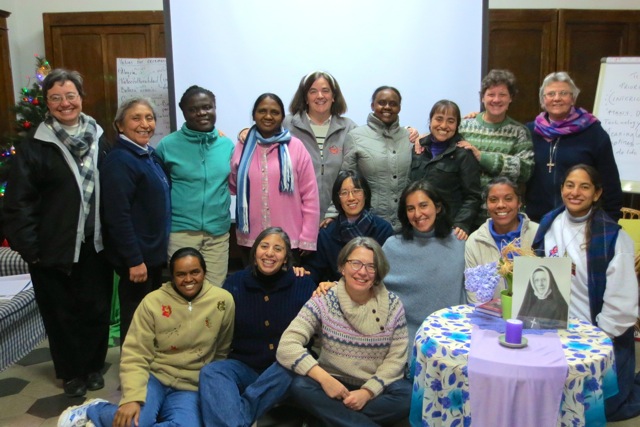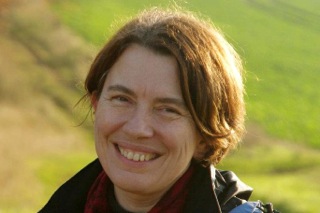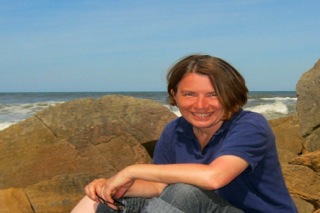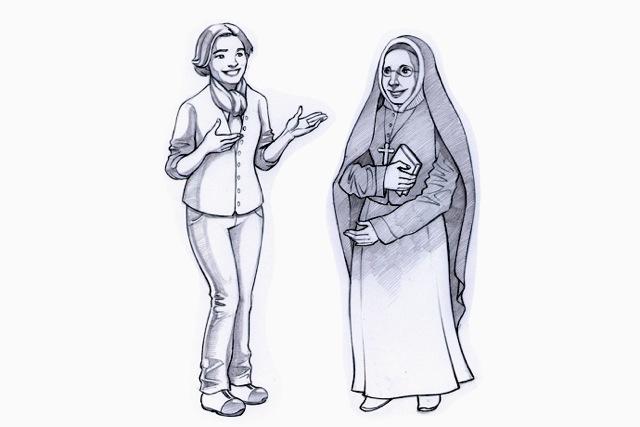An Essay by Sue Acheson RSCJ
Introduction
In 2010, the England/Wales Province began their planning for the centenary in 2014 of Janet Erskine Stuart’s death. I was then a senior manager in a large, state-funded college in London and was asked to give some input on what Janet Stuart might have to say to us as educators today. This required some research, mostly drawn from Stuart’s The Education of Catholic Girls, Maud Monahan’s Life and Letters, and handwritten notes of Stuart’s critical observations of practice lessons. I was delighted to discover that, although until then she had had no influence on my ministry or life, and the context in which she worked was so different from mine, we shared much in terms of values, priorities and approach. Reflecting on these shared values reassured me and helped me find a way to see how my work was part of a tradition, of which Janet Stuart was a charismatic exponent.
What I discovered is the way in which her educator’s heart was at work in her ministry of spiritual friendship with many. In her letters and conferences we see the same values of being open to change, of valuing the uniqueness of the individual and the unique call of God to each one. The essay below is an edited version of the talk I gave in 2010, at the beginning of my acquaintance with Janet Stuart.
A Visit with Janet Stuart
The other day the phone rang in my office; there was a visitor to see me. I wasn’t expecting anyone and seeing her from afar thought it was possibly the mother of one of our Muslim students, perhaps a recent immigrant from a part of the Islamic world that had a rather unique style of hijab. But when I saw her face and owlish glasses, I realised my mistake. It was Janet Erskine Stuart, and she had come to find out what I was up to and how things were going on since her day. She was interested, she said, in the college, because it trained teachers and had a branch where women were educated alongside men. She was also interested to find out how, without the benefit of Catholic teaching, we polished off the “roughness” of young people. Although Heaven was a tremendously stimulating place (there was plenty of hunting and angelic horses), she did miss teaching and would like to see some, please.
I was a bit appalled. We were both RSCJ, true, but we had very different CVs − what could we have to say to each other? However with the hope that her prayers would send some more young people our way, I agreed to meet with her. We started with the educational context.
In her day (1857-1914), she said, there were passionate debates, in the aftermath of the debacle of the Boer war, about the purpose of education. Bad leadership, bad management, lack of resourcefulness and practical ineptitude had led to unnecessary loss of life, war crimes, lost battles … Britain had very nearly got embroiled in a war it could not win! Debates raged in the press about how the recent reforms in education had failed the country and its youth. How children had been over-examined and forced to rote-learn information that they did not know how to apply in real life ... She recalled public debates about what constituted good citizenship and employers complaining that education was not equipping young people for jobs in industry or business.
She remembered debates in 1902 about religious education: should it be compulsory in state elementary schools? Would it lead to sectarianism? It was a period of widening participation in university education, especially by women, and that was controversial too. She sighed – there were a lot of interesting ideas around and many were good. Teachers, as she wrote in her book on education, understand how to teach, understand learning; and too much meddling from government, however well intentioned, can do more harm than good.
So here was some familiar ground. In England we continue to debate whether the public exam system is fit for purpose. Why are our 16-24 year olds near the bottom of international tables for literacy and numeracy skills, even after decades of attempted reforms? Do our young people leaving school or university have the right skills for the work place? Does the focus on a functional purpose for university education come at the expense of a beneficial traditional emphasis on “education of the whole person?”
But there were also many differences between us. Her education world − the one she writes about in The Education of Catholic Girls – was apparently a golden one: a private Catholic boarding school of about 150 girls, all from wealthy families. My education world: state-funded public education for 3,500 full-time students in apprenticeship courses as well as academic and vocational programmes. Among our concerns were gang conflicts, homelessness, lack of parental support, mental health issues ... There are still wars − and anguish about questions such as: what is education for? What are we aiming at? Janet Stuart knew about family stress and upset, and in her work with the partly state-funded schools run by the Society, she understood the merits as well as the frustrations of conforming to government requirements. The detail of Janet’s world was different, but her aims are recognisable.
I asked about her thoughts on curriculum. Her ideas, it must be confessed, seemed limited. She advocated nature study, but not physics or chemistry. She encouraged a sort of philosophy, but it was really only history of (Catholic) ideas with a little logic thrown in. I liked her enthusiasm for history. Home economics, a little math, religion, English and art complete the picture. What did she think about engineering, business, and graphics? “Possibly all very well for children of working people,” she said, “who had to make their own way − but more about instruction than education.” I disagreed, but reflected, too, that things have not changed so much – there is still a destructive division in England between “academic” and “vocational” subjects; employers complain about standards, but often look for interviewees with academic rather than vocational qualifications. Janet was surprised but thoughtful when I explained why science and math were so central to education, including, of course, for girls. She agreed that the section of her book that assumes they are not would “no longer do.”
I asked her about her views on higher education and was again disappointed. Her enthusiasm for higher education for women was qualified. Women in her day might study for a degree, but it would, she thought, be impossible for them to get the full benefit of university experience, as necessarily they could not be allowed the same social freedoms that men were allowed. Then there was the lack of opportunity for women to use their degrees in the world of work. I think I picked up an excitement in her – possibly even an envy − at the opportunities now available, at how girls and women might now find their “telos” beyond the boundaries of family and social expectation.
Janet sympathised with the ongoing drive to improve standards in education, with the inspectorate’s insistence that only “outstanding’ is really good enough. Being outstanding is exhausting. It can take away from the joy of teaching, unless you understand that all it means is that every person who leaves your class leaves believing confidently in his/her unique potential, and with the skills to turn this potential into flourishing lives − their own and those of others. She reminded me that she had written frequently about striving for the “highest and the best.” She recognised that only excellence is good enough for the “royal” souls of the children she educated. She acknowledged that what she called “the loss of direction” in society meant that girls and women had to learn to be resourceful and “to take care of themselves and be responsible for themselves.”
The modern inspectorate would like this very much. They call it being “an independent learner” and refer to “moral and spiritual development” and to “social cohesion” brought about by encouraging learners to learn from and respect one another’s differences. On the other hand, the modern inspector might be helpfully challenged by Janet’s insistence that “what with weighing and measuring, inspecting and reporting, exercising and rapid forcing and comparing, applauding and tabulating results … the enthusiasts for child study are … like destructive sportsmen in a new country, exterminating the rare species of wild animals they find there.” The true test of excellence is what goes on in lessons and the spring in the step of the students who leave it. No student, she says, should leave a lesson the same as when s/he went in.
I took Janet to observe some classes. She enjoyed the lessons and gave feedback to the teachers in a more robust way than is easy for some to accept. She advised a math teacher that “the lesson tended to darken counsel by introducing too many difficulties at once” and told a literature teacher that she “rushed away like a charioteer leaving the weaker pupils ‘dropped off’ and ‘breathless.’” The lesson she liked the most was an art lesson in which all students were encouraged to express what s/he closely observe in their own unique way, resulting in imaginative works of art that expressed each one’s individuality.
Each mind, she emphasised, needs to be met just where it is, with its own mental images, vocabulary, habit of thought and attention, all calling for consideration and adaptation of the subject to its own particular case. Young people, she reminded me, do not spontaneously recognise that there are different ways of learning adapted to different subjects. There is one way for multiplication tables, another for history and other for poetry. They need to be taught how to learn. She emphasised the importance of good questioning. Make sure your questions are differentiated and focused, she advised. Give learners time to think and to answer. Use questions to open up new fields of thought, to check learning, to stretch learners. She also emphasised the importance of welcoming independent thought, even if it seems aggressive and conceited: “their positive assurance that they see to the end of things is the characteristic of their age, and it is better they should show themselves thus than through want of courage fall in with everything that is set before them. The too submissive minds are laying up trouble for the future.”
Well, there is no problem with submissive minds in this college, though there are many lazy or confused ones. I offer her a job. But she is getting twitchy now, missing the heavenly hunting grounds, and she gently turns it down.
As she gets ready to leave, she reminds me that the most important point is “that we ourselves should care about what we teach.” The best lessons are those in which the teacher has what she calls “sincerity” – an informed charisma that comes from the heart, is not mere showmanship, that communicates value and inspires the person to experience within herself that “life is worth living.”
I was delighted she had dropped in. In spite of the hundred years between us, we had a lot in common, and I thought it a pity I had not met her earlier on in my career in education! I try once more, “Will you at least work in an advisory capacity, as a consultant?” She’s going to think about it. Meanwhile, her horse is getting restive and in danger of being horse-napped by the students from a rival college nearby who follow equine studies. She’s off, and I get back to work.
Reprinted with permission from http://rscj.org
A French translation will be posted as soon as it is available.
**********
In the evening of 19th August 2015, God called Sue to the fullness of life. She was 60, and had been living courageously with cancer for several months. Please pray for her family, friends and us, her RSCJ sisters, as we mourn our loss.
In the last few years Sue had done extensive research into the life and spirituality of Janet Erskine Stuart. She provided all the input at the 2013 Conference with which we began the commemoration of the JES centenary, and was a main speaker at the JES 2014 events.
Source: http://www.societysacredheart.org.uk/news-events.html

Sue (seated, third from the left), with the Probation Community (2015).


Section:
Province:
Living Our Mission:

